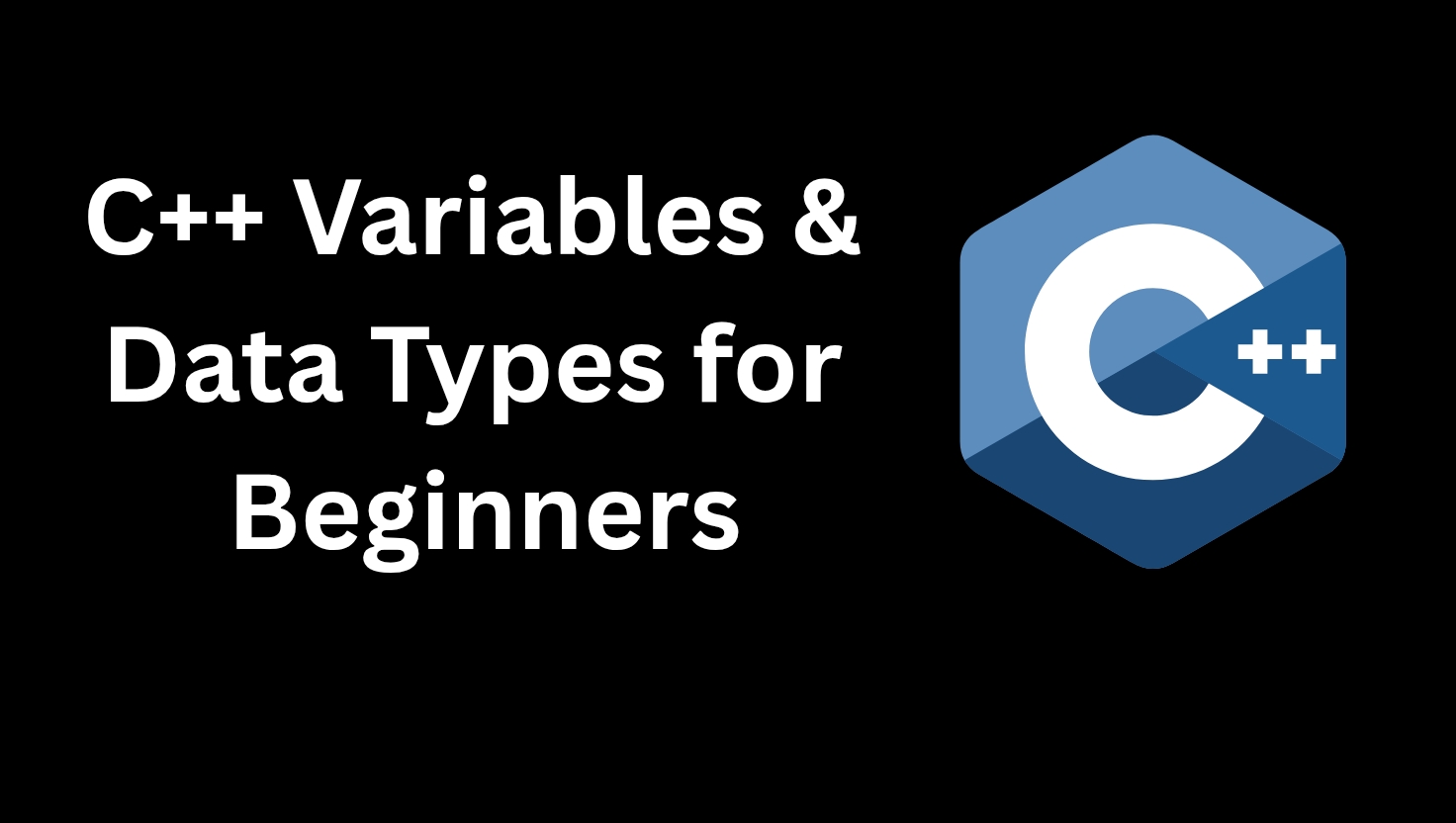Hey coder! Welcome back to Day 3 of your C++ learning journey. If you followed along with Day 2: How to Set Up C++ on VS Code (Step-by-Step for Absolute Beginners) you’ve already installed your compiler, written your first “Hello World” program, and run it successfully. That means you’re now ready to take the next big step how to use variables in C++.
Variables are like containers in your code they help you store, change, and reuse information. Whether it’s a user’s age, a total price, or a simple message, variables are how your program remembers stuff.
In this post, you’ll also learn about data types, which decide what kind of value (like a number, letter, or word) can go inside each variable.
By the end of this guide, you’ll not only understand how to declare variables, but you’ll also be writing real C++ programs that respond to user input just like real applications do!
What You’ll Learn
What variables are and how they work in C++
All major C++ data types with examples
How to take input from users using cin
How to write a small, fully working interactive program
Full explanation of every line of code (like a mentor sitting beside you)
1. What Are Variables in C++?
A variable is a name you give to a storage location in memory — like a labeled box that holds some value.
You use variables to:
Store numbers (scores, ages, prices)
Store text (names, cities)
Make calculations
Track user data
Syntax:
int age = 21;int → Data type (declares what kind of data this is)
age → Variable name
21 → The actual value stored in the variable
C++ Data Types: Full Explanation
Let’s now dive into each main C++ data type used in beginner to intermediate programs:
1. int — Integer (Whole Numbers)
Used for numbers like 1, 25, -9 — anything without decimal.
int score = 100;
• Use int when:
Counting things (people, items, marks)
Working with loops
Math that doesn’t need decimals
2. float — Decimal Numbers (Single Precision)
Used for storing decimal values like 3.14 or 99.9
float price = 9.99;
• Use float when:
You need simple decimal numbers
You’re doing basic financial calculations
❗ Note: Less precise than double, but uses less memory.
3. double — Decimal Numbers (Double Precision)
More accurate than float, useful in calculations needing more precision.
double gpa = 8.92;
• Use double when:
Working with more precise values
Doing scientific or engineering calculations
4. char — Single Character
Stores just one character: letter, digit, or symbol, wrapped in single quotes.
char grade = ‘A’;
• Use char when:
You only need to store a letter or symbol
You’re working with grading, menus, initials
5. string — Sequence of Characters (Words or Sentences)
Stores text. You need to #include at the top.
include
string name = “Anjali”;
• Use string when:
You want to store names, messages, sentences
You’re collecting user input as text
6. bool — Boolean (True/False)
Holds a logical value: true or false.
bool isPassed = true;
• Use bool when:
You need to make yes/no decisions
You’re checking conditions (e.g., login success)
Let’s Put It Together: A Program with All Data Types
#include <iostream>
#include <string>
using namespace std;
int main() {
int age = 21;
float height = 5.7;
double pi = 3.14159;
char grade = 'A';
string name = "Ravi";
bool isStudent = true;
cout << "Name: " << name << endl;
cout << "Age: " << age << endl;
cout << "Height: " << height << endl;
cout << "PI Value: " << pi << endl;
cout << "Grade: " << grade << endl;
cout << "Is a student? " << isStudent << endl;
return 0;
}Line-by-Line Explanation
#include <iostream>✔️ This lets you use cin and cout for input/output
#include <string>✔️ Required for using the string data type
using namespace std;✔️ Avoids needing to write std::cout every time
int main() {✔️ This is where your program starts running
int age = 21;✔️ Declares an int variable called age and stores 21 in it
float height = 5.7;✔️ Declares a decimal number (like 5 feet 7 inches)
double pi = 3.14159;✔️ More precise decimal — good for math or science
char grade = 'A';✔️ Stores a single letter, like a grade
string name = "Ravi";✔️ Holds a word or phrase, such as a person’s name
bool isStudent = true;✔️ Holds a true or false value — very useful in logic
cout << "Name: " << name << endl;✔️ Prints “Name: Ravi” on the screen
Repeat this pattern for the other cout lines — it displays each variable’s value.
return 0;
}✔️ Tells the computer that your program ran successfully
Example: College Student Profile
Suppose you’re building a college form app.
You’d need to:
Get the student’s name → string
Their age → int
Height → float
GPA or some calculation → double
Initial or section → char
Check if they’re currently enrolled → bool
That’s 6 data types in one simple use case. Now imagine building forms, game settings, or online accounts — this is how real programs begin.
Practice Challenge (Write Your Own Program)
Try writing a small program that:
Asks for your name, age, and favorite letter
Stores your weight as float
Stores your ID as int
Stores a boolean like isSubscribed = true
Prints them all out neatly
Wrap-Up: What You Learned
Variables store values in memory with a name and type
Data types decide what kind of value a variable holds
You now know how to use: int, float, double, char, string, and bool
What’s Next?
In Day 4, we’ll go into conditional logic where your program starts making decisions:
Using if, else, switch
Checking user input
Adding logic to calculators, quizzes, and more
It’s when code starts getting smart. 💡
